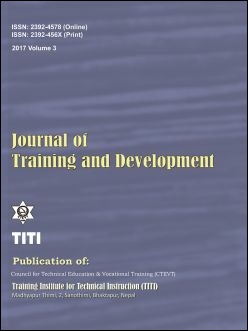ICT Pedagogy in Higher Education: A Constructivist Approach
DOI:
https://doi.org/10.3126/jtd.v3i0.18232Keywords:
Constructivist approach, higher education, ICT, knowledge building, pedagogyAbstract
Information and communication technology (ICT) has been an integral part of pedagogy in educational institutions in general and higher education in particular. My focus in this paper is to see how ICT plays a role in constructing knowledge and improving learning in the higher educational institutions. The arguments are based on the review of existing ICT related literature, and in- depth interviews with few ICT pedagogy and social constructivist related educationists. So, the method applied is qualitative. First, ICT plays a role of a means to an end in the sense that it carries messages with higher level of accuracy. Second, it makes the interactions among the target group ‘living’ and creates the environment for effective learning. Third, ICT links the performers (teachers and students) in the learning groups cognitively and affectively to transform the unit of learning among the learners. This means that ICT plays a vital role in the part of the learners in which they are liberated from their teachers’ dominance.
Downloads
Downloads
Published
How to Cite
Issue
Section
License
Authors who publish with this journal agree to the following terms:
- Authors retain copyright and grant the journal right of first publication with the work simultaneously licensed under a Creative Commons Attribution License that allows others to share the work with an acknowledgement of the work's authorship and initial publication in this journal.
- Authors are able to enter into separate, additional contractual arrangements for the non-exclusive distribution of the journal's published version of the work (e.g., post it to an institutional repository or publish it in a book), with an acknowledgement of its initial publication in this journal.
- Authors are permitted and encouraged to post their work online (e.g., in institutional repositories or on their website) prior to and during the submission process, as it can lead to productive exchanges, as well as earlier and greater citation of published work (See The Effect of Open Access).




